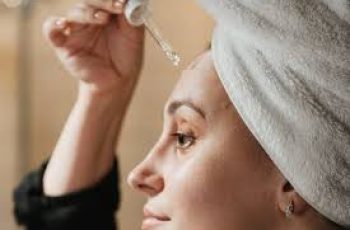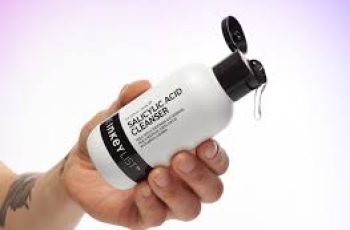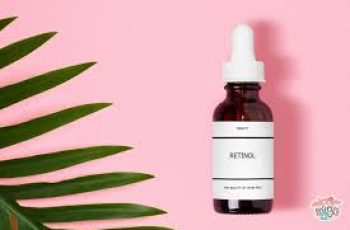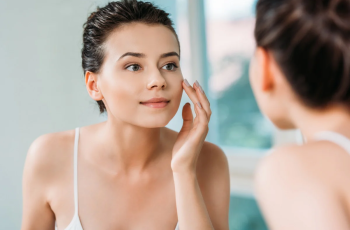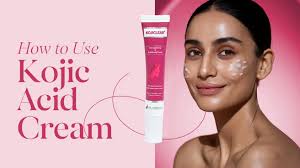
.webp)
.webp)
.webp)
Everything You Need to Know About Kojic Acid
.webp)
.webp)
Kojic acid is a popular skincare ingredient used to brighten skin and treat pigmentation. But there’s more to it than just lightening. Let’s explore its uses, benefits, safety, and how to use it effectively.
.webp)
.webp)
.webp)
What Is Kojic Acid?
.webp)
.webp)
Kojic acid is a natural substance made through the fermentation of certain fungi. It’s mainly produced by species like Aspergillus oryzae and Penicillium.
.webp)
.webp)
.webp)
This acid is also formed during the fermentation of foods such as miso, sake, and soy sauce. That makes it a common ingredient in both food and skincare.
.webp)
.webp)
Kojic acid is best known for its ability to reduce melanin production in the skin. Melanin is the pigment that gives color to your skin, hair, and eyes.
.webp)
.webp)
.webp)
Too much melanin can cause dark spots, uneven skin tone, and conditions like melasma. Kojic acid works by interrupting the melanin-making process.
.webp)
.webp)
How Kojic Acid Works
.webp)
.webp)
.webp)
Kojic acid blocks an enzyme called tyrosinase. This enzyme plays a key role in the creation of melanin. By stopping it, kojic acid helps lighten areas of dark pigmentation.
.webp)
.webp)
That’s why you’ll often find kojic acid in products designed to treat sun spots, scars, and age spots. It’s also used to even out skin tone.
.webp)
.webp)
.webp)
While it’s primarily used for cosmetic reasons, kojic acid also has potential in medicine and food preservation.
.webp)
.webp)
Common Uses of Kojic Acid
.webp)
.webp)
.webp)
Kojic acid isn’t just for skincare. It’s used in several industries, including cosmetics, medicine, dental care, and food processing.
.webp)
.webp)
1. Cosmetics
.webp)
.webp)
.webp)
In cosmetics, kojic acid is widely used as a skin-lightening ingredient. Products contain it in concentrations ranging from 0.4% to 4%.
.webp)
.webp)
You’ll find kojic acid in creams, lotions, soaps, face washes, serums, sunscreens, and even eye creams. It helps fade dark spots and discoloration.
.webp)
.webp)
.webp)
Some products also include kojic acid for its preservative effect. It helps extend shelf life by slowing down oxidation and microbial growth.
.webp)
.webp)
2. Dental Care
.webp)
.webp)
.webp)
Kojic acid is sometimes added to tooth-whitening patches or dental gels. It may enhance the whitening effect and offer mild antibacterial benefits.
.webp)
.webp)
3. Medical Use
.webp)
.webp)
.webp)
In medicine, kojic acid is used to treat melasma and post-inflammatory hyperpigmentation. These conditions cause dark patches on the skin.
.webp)
.webp)
It can also be found in certain antimicrobial medications. Its antifungal and antibacterial properties offer therapeutic benefits in topical products.
.webp)
.webp)
.webp)
4. Food Industry
.webp)
.webp)
Kojic acid has antioxidant properties. In the food industry, it’s used to prevent spoilage and discoloration of items like seafood, oils, and syrups.
.webp)
.webp)
.webp)
By slowing oxidation, it helps keep food fresh longer. It’s also a common additive in processed foods to preserve their appearance and quality.
.webp)
.webp)
Benefits of Kojic Acid for Skin
.webp)
.webp)
.webp)
The main benefit of kojic acid is its ability to brighten the skin and reduce visible pigmentation. But there are a few other lesser-known perks.
.webp)
.webp)
1. Reduces Dark Spots
.webp)
A study showed that using a 3% kojic acid cream after acne breakouts resulted in a brighter complexion and reduced dark patches.
2. Treats Melasma
Kojic acid is often used alongside hydroquinone to treat melasma. This combination can improve results, especially in stubborn cases.
Though it is approved in the U.S., kojic acid is banned for cosmetic use in Japan, Australia, and parts of Europe due to safety concerns.
3. May Have Antioxidant Effects
Kojic acid has antioxidant properties, which means it can help fight free radicals. These unstable molecules damage skin cells and speed up aging.
4. Antimicrobial & Anti-Inflammatory Properties
Some studies suggest kojic acid can also reduce inflammation and prevent bacterial or fungal growth on the skin. However, more human research is needed.
How to Use Kojic Acid in Your Skincare Routine
You can find kojic acid in many forms, including serums, moisturizers, cleansers, and soaps. Here are some guidelines for safe and effective use.
1. Choose Low Concentrations
Experts recommend using products with a maximum of 1% kojic acid. Higher concentrations may increase the risk of side effects and irritation.
2. Do a Patch Test First
Before using a new kojic acid product, apply it to a small area of skin and wait 24-48 hours. If you notice itching, redness, or burning, stop using it.
3. Always Wear Sunscreen
Kojic acid can make your skin more sensitive to sunlight. Use a broad-spectrum sunscreen with SPF 30 or higher every day to protect your skin.
4. Avoid Broken or Irritated Skin
Never apply kojic acid products to cuts, scrapes, or areas with inflammation. Wait until your skin heals before using the product again.
5. Start Slow
Begin by using kojic acid products 2–3 times a week. Gradually increase frequency if your skin tolerates it well.
Safety and Side Effects
When used correctly, kojic acid is generally safe. However, it’s not free from risks, especially if overused or applied in high concentrations.
Common Side Effects Include:
Redness, Irritation, Itching, Rashes, Burning sensations
In rare cases, people may develop contact dermatitis. This condition causes skin inflammation triggered by an allergen or irritant in the product.
If you have sensitive skin, consult a dermatologist before adding kojic acid to your regimen. They can help assess your risk and suggest alternatives.
Regulatory Guidelines
The Scientific Committee on Consumer Safety recommends keeping kojic acid concentrations in cosmetics below 1%. This minimizes potential side effects.
Despite these recommendations, some products exceed this limit. Be cautious and always read ingredient labels before purchasing.
Caution About Unregulated Products
Kojic acid is widely available in many over-the-counter products, especially online. But not all of them are safe or regulated.
Avoid:
Homemade kojic acid creams
Products sold without ingredient lists
Unregulated or international sellers with no safety testing
Items that claim “extra-strength” or “fast-acting” lightening effects
Some of these may contain harmful ingredients like mercury, lead, or corticosteroids. These substances can damage your skin or lead to health problems.
Corticosteroids, for instance, can be effective for inflammation, but long-term use without medical supervision can cause serious skin thinning and hormone issues.
Choosing the Right Kojic Acid Product
If you’re planning to buy a kojic acid product, here are some tips to make a safe and effective choice.
1. Look for Products With ≤1% Kojic Acid
More isn’t always better. Stick with trusted brands that clearly list kojic acid concentrations within the safe range.
2. Avoid Using Multiple Lightening Agents
Check your routine for other ingredients like azelaic acid, hydroquinone, or retinoids. Using too many lightening agents at once can damage your skin barrier.
3. Choose Reputable Brands
Look for products that have been tested for safety and approved for cosmetic use in your country. Check customer reviews and dermatological backing.
The Dark Side of Skin Lightening
Skin-lightening agents are often misused. A global study showed that about 27% of users apply them just to lighten their natural skin tone.
Only around 23% of people using skin-lightening products consulted a healthcare provider. This shows a need for better education on safe usage.
Using harsh or unregulated products can lead to serious conditions, including permanent skin damage, scarring, and hormone disruption.
Remember: Healthy skin is more important than lighter skin. Always prioritize safety over quick cosmetic results.
Final Thoughts
Kojic acid can be an effective tool for brightening the skin and treating pigmentation disorders like melasma and post-acne spots.
It’s available in many over-the-counter products, but you should stick to those with 1% or less concentration and apply them cautiously.
Always do a patch test, wear sunscreen, and consult a dermatologist if you have sensitive skin or underlying conditions.
Used properly, kojic acid can be part of a safe and effective skincare routine that improves your skin’s appearance and confidence—without harm.
